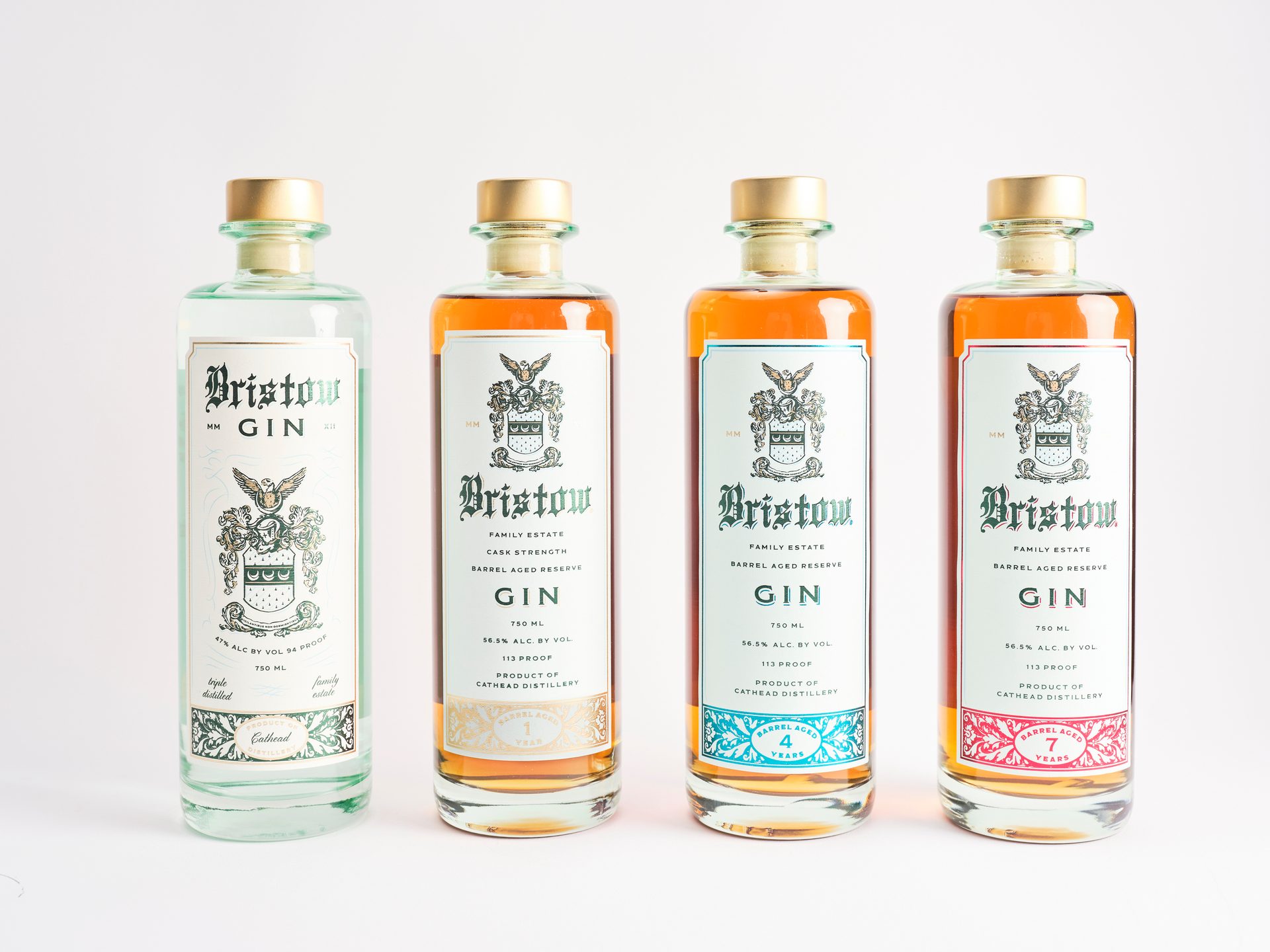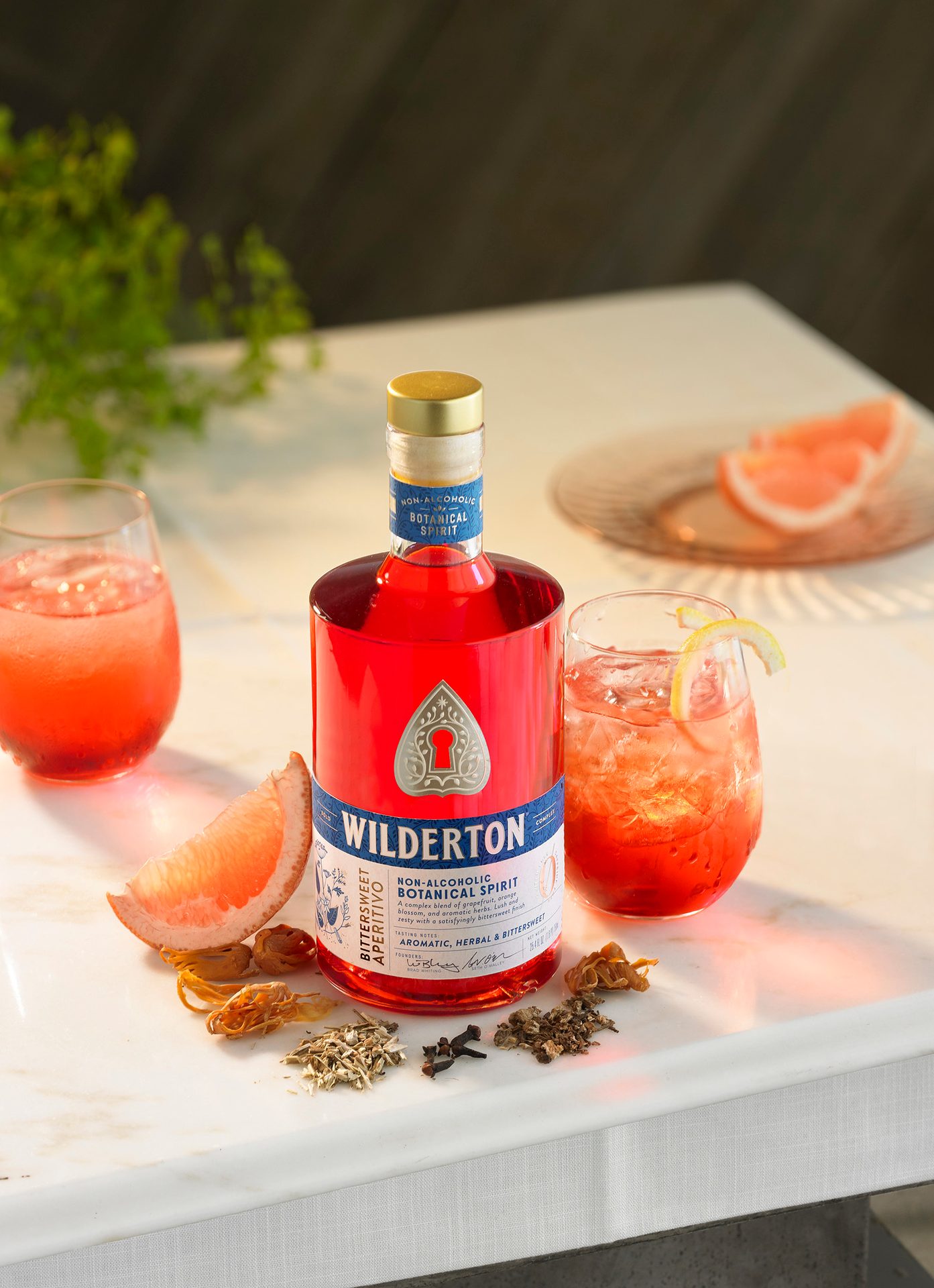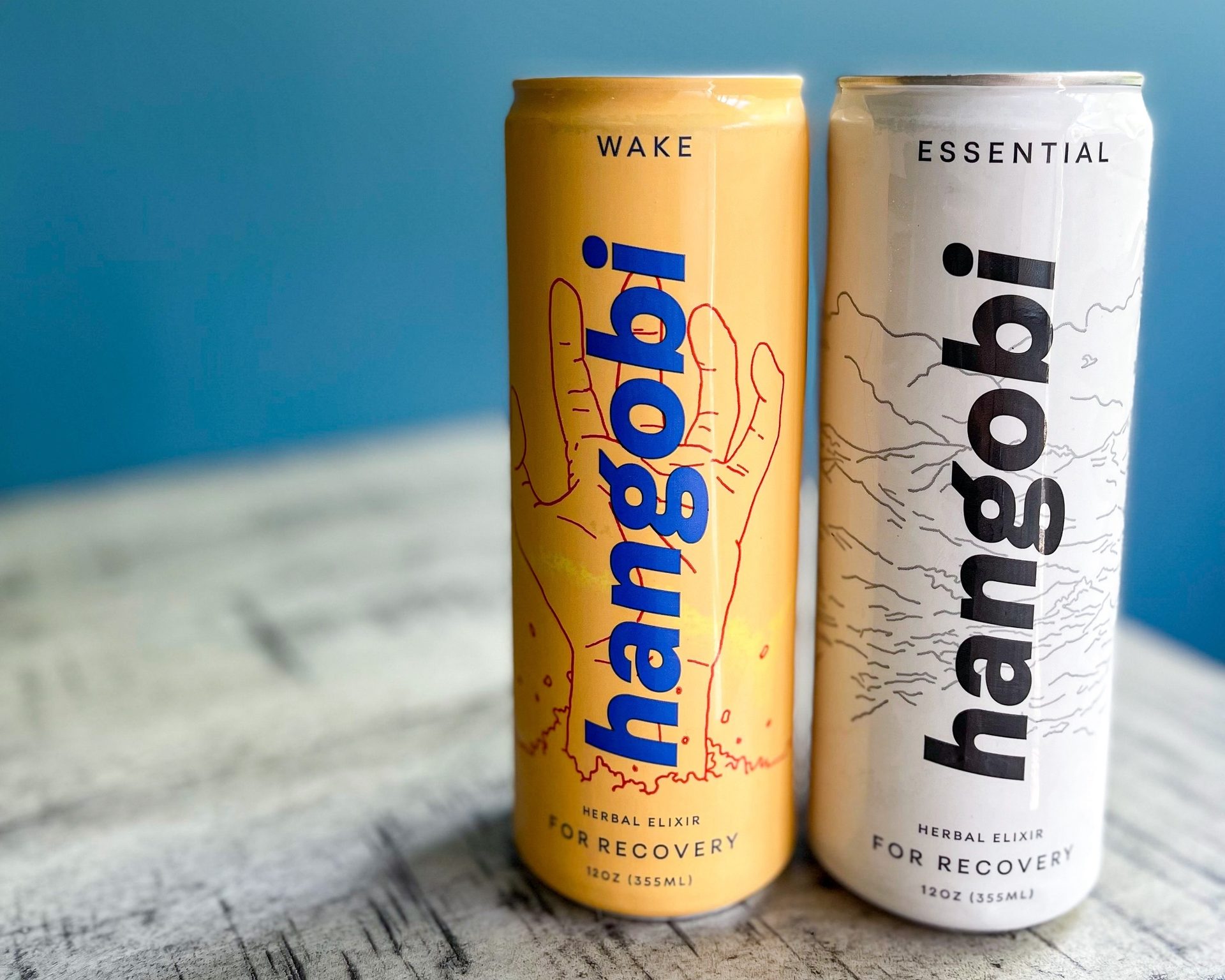Ingredient
Spotlight
Rising to the occasion
By Lauren Sabetta
Adaptogens, botanical extracts help beverage-makers meet consumers’ need states
(Image courtesy of Getty Images)
With heightened consumer preference for clean label drinks with clean, organic ingredients, Market Research Future (MRFR), Maharashtra, India, notes that the usage of botanical extracts is not only prevalent in the healthcare industry, but also one of the most significant components in the food and beverage space.
According to MRFR’s report titled "Botanical Extracts Market Information by Form, Application, and Region - Forecast till 2030,” the market will capture a compound annual growth rate (CAGR) of 9.5% between 2020 and 2030, touching a valuation of $10.20 billion by 2030.
A natural, holistic approach to health and wellness is on the rise, says Anuhya Bhaskara, director of research and development (R&D) at Eustis, Fla.-based Florida Food Products Inc. (FFP).
“Consumers are increasingly looking for a health benefit (better-for-you) from anything they consume including beverages, whether it be a functional claim or a health halo effect,” she explains. “This trend is driving the botanicals and adaptogens into a mainstream ingredients category.”
As botanicals add an authentic taste to products, many are associated with certain health benefits, notes Coralie Garcia Perrin, global strategic marketing director of sweet, dairy taste and modulation at Kerry, Beloit, Wis.
“For centuries, plant botanicals have been a key component of traditional medicine, aromatherapy and herbal infusions,” Perrin says. “Extracts such as ginseng have associations with energy, immune health and stress management.
With Bristow Gin serving as the base, Cathead Distillery’s Barrel Aged Reserves are comprised of 11 botanicals, including juniper, angelica root, cardamom, clove, coriander and lemon verbena, the company says. (Image courtesy of Cathead Distillery)

“In addition, adaptogens like ashwagandha have been correlated with benefits for sleep and stress management, while extracts such as Terminalia Chebula have been studied to provide support for joint health,” she continues. “Combining these benefits with trending consumer flavors from botanicals can help to create beverages that taste good and do good.”
As more consumers take a proactive approach to holistic well-being, many are attracted to beverages that contain botanical ingredients, notes Alessio Tagliaferri, global business director for botanicals and natural health and nutrition (NHN) platform at ADM, Chicago.
“Consumers also associate botanical ingredients with several reputable qualities, including sustainable, natural, ‘better-for-me’ and trustworthy,” he says. “According to our research, 75% of consumers say they would pay extra for a clean label beverage. Today’s conscientious consumers are seeking food and beverage products that can benefit themselves, their communities and the planet, and botanical extracts are understood by consumers to be ‘closer to nature’ [with] clean and green ingredients that help meet this need.
“Another driver behind the use of botanicals in beverages is their role in premiumization, ultimately capturing shoppers’ attention with products that contain these ingredients,” he continues. “This is an interesting value proposition for beverage brands, and those that act on the trend will captivate consumers for potential repeat purchases.”
Kerry’s Perrin echoes similar sentiments, noting that beyond flavors, global consumers are connecting botanical ingredients with various reputable qualities.
“In its 2021 ‘Botanical State of Mind’ report, Kerry surveyed over 6,500 consumers across 12 countries in North America, Europe, Latin America, Asia Pacific and Africa to discover attitudes toward over 55 botanicals flavors and ingredients,” Perrin says. “The research shows that botanical flavors connect with consumers on a highly positive level, beyond flavor and taste. Consumers also think about botanicals as being energetic, interesting, useful, trustworthy and safe.
“For example, a beverage with guarana, ginseng and ginger can carry a similar connotation of ‘energy’ as a coffee or energy drink would to the consumer,” she continues. “Meanwhile, ingredients such as saffron, bergamot and honey are considered premium.”
“In a very highly competitive marketplace, brands are constantly attempting to stand out and interestingly, 87% of consumers say that botanicals provide a unique taste experience. Meanwhile, according to Innova research, the use of botanicals on-front-of-pack will result in a 23% price premium.”
— Coralie Garcia Perrin, global strategic marketing director of sweet, dairy taste and modulation at Kerry
Botanical flavors span across categories
For consumers attracted to clean label products containing botanical ingredients, experts note that botanical flavors can add a refreshing natural “pop” to a variety of beverages.
With the functional beverage space growing dramatically, ADM’s Tagliaferri notes that, beyond their associated wellness attributes, botanicals are in demand as a source of exciting taste experiences.
“From active nutrition to energy drinks, and bottled teas to hard seltzers, botanical ingredients are key in a variety of functional beverage formulations,” he says. “In fact, 43% of consumers believe botanical ingredients are tasty, and they don’t feel they have to sacrifice flavor for nutrition. Plus, 42% of global consumers say that use of botanical ingredients would make them increase their intake of beverages.
“Juices, flavored waters and fruit-flavored drinks are among the top beverage formats for botanical inclusions,” he continues.
Leslie Gallo, president of Artemis International Inc., Fort Wayne, Ind., notes that simple juices are the easiest to formulate, as berry ingredients are well suited for application.
“Lately we’ve seen a surge of interest in our botanicals, particularly ElderCraft and acerola,” Gallo says. “Both of these extracts are easy to formulate and offer the immune boost that consumers now seek in beverages, so their appeal makes sense. Formulators are taking notice.
“Elderberry has advanced beyond tea and is making its way into mainstream beverages and juices,” he continues. “One of the first major brands to embrace elderberry in a non-supplement, mainstream beverage was Matt’s Organic Ultimate Immune and now others are following.”
Another key category embracing botanicals is fermented beverages, especially kombucha, Gallo says.
“A more recent interest in immunity is sparkling beverages and combo-benefit beverages that have significant appeal to both the consumer and eSports market, which is growing exponentially,” he notes. “We see tremendous opportunity for functional beverages in the eSports space.”
ADM’s Tagliaferri notes that botanical pairings easily can bridge categories, such as combining herbal extracts like culinary fennel with citrus flavors.
Wilderton’s Bittersweet Aperitivo captures the complex flavor profiles of a traditional Italian aperitif in a non-alcohol ruby red liquid hand crafted using a proprietary process in Portland from globally sourced botanicals, it says. (Image courtesy of Wilderton)

“Uplifting lemon and spicy ginger work particularly well in cocktails and zero-proof elixirs, especially as heat-inducing ginger can mimic the warming sensation of alcohol,” he says. “Tropical fruit flavor profiles are also trending in this space, including pineapple, mango, passionfruit, starfruit and papaya. With a dash of turmeric for vibrant yellow-orange color along with its connection to anti-inflammatory support, blends of botanicals and these island fruits are gaining prominence in protein shakes and cold-pressed juices.
“On top of that, vegetables can bring a fresh, green flavor and color to beverage applications, such as cucumber water, jalapeño and lemon Margaritas, and ‘super green’ smoothies blended with kale, arugula or spinach,” he continues.
Although popular botanicals such as citrus, mint and ginger are “time-honored” favorites, Kerry’s Perrin notes that consumers are taking note of other interesting botanicals including lavender, rhubarb and various roots.
“In a very highly competitive marketplace, brands are constantly attempting to stand out and interestingly, 87% of consumers say that botanicals provide a unique taste experience,” Perrin says. “Meanwhile, according to Innova research, the use of botanicals on-front-of-pack will result in a 23% price premium. Formulating with botanicals can certainly win consumer hearts, especially by using top appealing flavors such as mint, honey and cinnamon.
“Manufacturers should emphasize the link between botanical flavors, their corresponding emotions and the association with health benefits they evoke to create flavors that meet consumers’ daypart and occasion needs,” she continues. “These insights can be leveraged to connect with consumers to deliver a stronger taste experience in food and beverages and support product development.”
Flavor combinations bring new possibilities
In the beverage space, as more consumers seek out innovative flavors, experts note that formulators increasingly are turning to botanical combinations to meet this demand.
“Following the pandemic and lockdowns, consumers are craving for innovative flavor combinations that let them experience the tastes of the world, which is driving the use of botanicals,” FFP’s Bhaskara notes. “Low-, no-alcohol trends driving the mocktail category are pushing the formulators to use botanicals so as to mimic the complexity of a cocktail.
“Sugar reduction is also a trend that is driving botanicals like monk fruit, stevia, etc.,” she continues.
Kerry’s Perrin notes that with increased desire for low- or no-alcohol beverages that taste like beverage alcohol products, new botanical flavors are on the rise.
When adding botanicals to beverage formulations, experts note that it not only takes knowledge and technical skill, but also a bit of experimentation.
Alessio Tagliaferri, global business director for botanicals and natural health and nutrition (NHN) platform at ADM, Chicago, notes that solubility is critical and can be a challenge with root-based botanicals.
“Some botanicals can bring astringency to the matrix, which may need to be corrected with complementary ingredients like taste modulators for improved mouthfeel,” he says. “In terms of functionality, botanicals might degrade with prolonged exposure to heat, water or light. Product developers must calculate for any loss in functionality to ensure the beverage can meet any claims throughout its shelf life.
“A full-service partner like ADM supports brands in creating products with functional botanicals that address consumer needs for efficacy along with delicious, nutritious, ‘clean and green’ beverages,” he continues. “We build full spectrum beverages that are functional and taste great.”
When formulating beverages with dark berry ingredients, the natural color properties should be considered, says Melanie Bush, vice president of science and research at Artemis International Inc., Fort Wayne, Ind.
“Depending on the potency of the ingredient, the resulting beverage could take on a red to dark purple hue,” she explains. “This might be a welcome added benefit to replace artificial colors, but it also could cause a disconnect for something like a lemon-lime beverage that is dark purple in color.”
Coralie Garcia Perrin, global strategic marketing director of sweet, dairy taste and modulation at Kerry, Beloit, Wis., suggests that when developing products positioned around a specific health need manufacturers should seek to utilize botanicals or adaptogens that are supported by science to substantiate their health effect.
Moreover, Perrin notes that manufacturers should take sourcing and provenance of the ingredient into account as part of an overall long-term product development and marketing plan.
“It’s vital to know first which botanicals or adaptogens that support specific need states are most appealing to consumers and then combine these with beverage flavors to develop a unique product that can be competitive in the market and interesting to consumers.” Perrin says. “Doing so will build greater trust and confidence with the end consumer.”
Developed for success
Loaded with diverse ingredients including antioxidants, adaptogens and amino acids, Hangobi Herbal Elixirs come in three mood-focused blends — WAKE for energy, ESSENTIAL for balance, and CALM for stress relief, the company says. (Image courtesy of Hangobi)

“Kerry has its Botanicals Collection ZERO 2.0, an enhanced next-generation range of high-quality, authentic botanical extracts — containing 0% ethanol — designed specifically for the global rapid-growth low- and no-alcohol beverage markets,” Perrin says. “Applications include low-, no-alcohol drinks and mocktails, regular alcoholic beverages, and almost any beverage application in which a low level of alcohol or a unique taste experience is desired.
“This extensive portfolio of tastes enables drink manufacturers to maintain a low (or zero) alcohol content and permits a ‘0.0%’ claim,” she continues. “The range of possible distillates in this new 2.0 generation includes fruit; floral; and spice and brown tonalities such as passionfruit, rosebud, elderflower, caraway, black pepper, cumin, cocoa and coffee.”
Adaptogens flourish with well-being properties
Although utilized in Ayurvedic and Chinese medicine for more than 1,000 years, experts note that adaptogens’ growing popularity in the functional beverage space is spanning across the globe.
Known typically as natural extracts from herbs, flowers, fruits and roots, adaptogens are believed to support and sustain good health and thereby improve overall quality of life, Kerry’s Perrin notes. When consumed, these extracts target specific physiological processes in your body, she says.
“For example, the roots, leaves, stems and fruits of the ashwagandha plant are thought to have healthful properties to promote longevity and vitality,” she explains. “Kerry’s Sensoril ashwagandha is a patented extract of the ashwagandha roots and leaves and supported by clinical studies to help people cope with everyday stress, which in turn promotes better sleep and well-being. Leading adaptogens include ginseng (American and Asian), ashwagandha, amla, rhodiola and basil to name a few.”
Melanie Bush, vice president of science and research at Artemis International, notes that in the berry category, some extracts have carved out a following as adaptogenic botanicals.
“Perhaps the most well-known in this area is elderberry,” Bush says. “A healthy and balanced immune system has become top of mind among consumers and being able to gain immune health benefits from everyday food and beverage choices is trending up.
“Research studies have shown that European black elderberry, like ElderCraft, has demonstrated immunomodulating benefits,” she continues. “Flavonoids like anthocyanins are among the key active constituents in elderberry that contribute to its therapeutic effects. However, a recent study (Stich et al, 2022) showed that naturally occurringpolysaccharides in European black elderberry that are present in ElderCraft also play a role in the immune benefits.”
Moreover, in the highly competitive beverage industry, Bush notes that incorporating immune benefits can be a real differentiator.
“Flavonoid-rich berry ingredients serve as a wonderful bridge between the supplement industry and the food and beverage industry by providing targeted health benefits as well as formulation-friendly flavor, color and solubility parameters,” she says. BI
